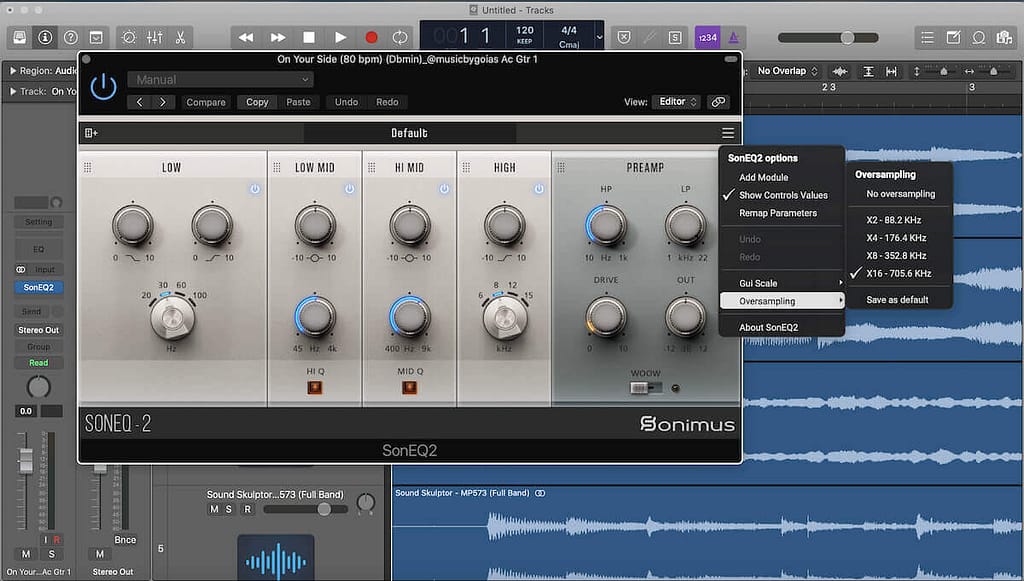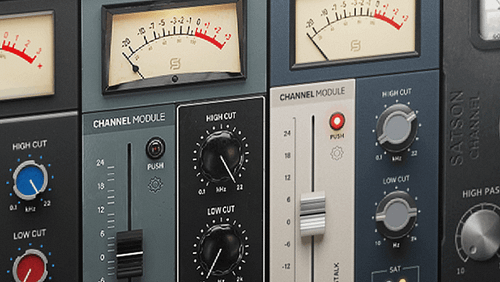What is oversampling? Should I use it in my audio processing? Is it going to make my productions better?
Intro
Oversampling is one of the hottest topics in the audio community. It is a very interesting subject but it can also end up being a bit overwhelming if you dig deep into it. In a nutshell, oversampling is a digital process that avoids the emergence of unwanted artifacts in the audio signal. But, where do those artifacts come from? And how does oversampling prevent them?
To shine a light on these questions we are going to walk you through some of the basic concepts behind this process. Hopefully, by the end, you will see oversampling less intimidating. Let’s dive into it
Back to the basics
Modern audio processing happens all in the box. Sound waves become electrical signals that get recorded in the form of ones and zeros in the computer. After that, the audio signal can be treated and modified with no further consequences than adding texture to your sound. Or so many people think. But in reality, in any stage of the signal processing, whether is digitalization or effect processing, one rule is always present: The Nyquist theorem.
The Nyquist theorem is the main principle of audio signal digitization. It states that the highest digitized frequency we can playback accurately is less than half the sampling rate. If we record audio at 44,100Hz, we should be able to playback audio below 22kHz, covering all the audible spectrum. Data sampled above that value won’t be able to be interpreted correctly by the computer. This misinterpretation causes the emergence of artifacts in your audio. This effect, also known as aliasing, is especially noticeable when high frequencies are raised or saturation is applied to the audio signal.
The Nyquist theorem states that the highest digitised frequency we can playback accurately is less than half the sampling rate.
That’s why it is very important to remove this “confusing” information during the audio processing. The best way to get rid of it is by using filters. We looked into filters and their importance in a previous article in case you want to dig deeper.
What is Oversampling?
To avoid aliasing, when audio is processed at high sample rates the filters can be less pronounced, and therefore easier to apply. But increasing the sample rate of your recording can increase massively the file size of your session and the burden of your computer when adding plugins. Here is where oversampling comes into play.
In short, oversampling makes your audio cleaner after processing and avoids increasing the file sizes massively. During oversampling, the frequency rate increases at the input of the processing, and before the sample rate is lowered down to its original value, a gentle filter gets applied. The original data doesn’t change when the sample rate increases, but it gives an extra headroom for processing the audio. This allows removing any aliasing caused as a side effect of the processing. The result is a cleaner and artifact-free audio signal. Which is normally more noticeable in the high range of the frequency spectrum.
Get advantage of Oversampling with SonEQ 2 and Satson CS
Now that we all understand what oversampling is and how it can improve the audio quality of your projects it seems clear how non-linear effects, like console emulations or analog modeling, can benefit from it. Just by adding this feature to your workflow, you are able to avoid aliasing when saturation and intermodulation occur.
That is why we have implemented oversampling in our latest products: Satson CS and SonEQ 2. This feature together with the modularity of these two plugins, allows you to push the processing harder without jeopardizing the audio quality. You can even oversample up to 16x for very extreme processing without compromising the CPU usage.

For example, in Satson CS you could add 3 sets of EQ and compression modules to shape the sound and a final gain staging module in gain compensation mode to add a heady saturation. Or in SonEQ 2 you could push the High band module severely while adding a subtle drive with the preamp. No matter how long your chains of modules are, the oversampling will always take care of any potential aliasing produced.

These are only a couple of ideas of how to take advantage of oversampling. Undoubtedly, a tremendously useful feature in the list of advantages that these plugins offer.







Each of the articles that come to me from you is amazing. They enrich me and help me understand better things that for years I thought I knew.
It is NOT easy to simplify the explanation of something complex but you always do it.
I hope you don’t stop doing it.
I am really very grateful.
Javier.
Thank you! :)